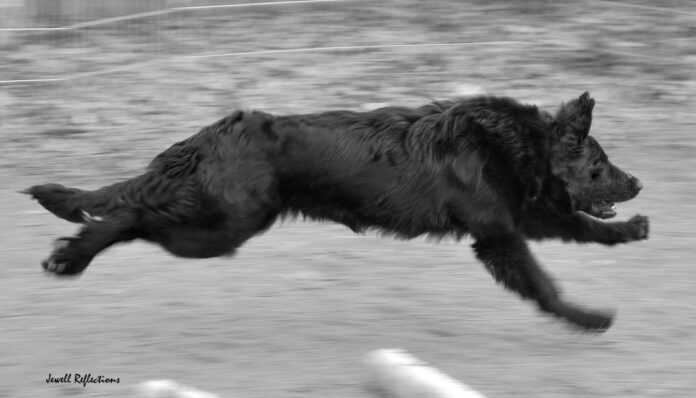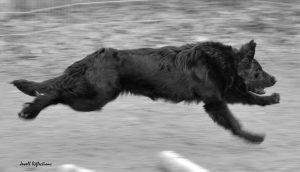
BY FRAN JEWELL

Pain? What does that have to do with dog training? Plenty! First, dogs are by nature very stoic. They will not tell you when they are in pain, so many of us miss this critical element in dog behavior. Why? Because when a dog shows pain, it makes them weaker to other dogs and it risks potential attack by another dog seeking higher status.
In my line of work, I am called for help when a dog suddenly is aggressive with other dogs, and even family members, when they didn’t used to be. I also get calls when dogs have fights among themselves in a multiple-dog household. Sometimes I hear from people when they see their dog just seems different than it used to be; their dog might now be afraid of other dogs or children when that wasn’t the case before. Or they hide in a closet for no apparent reason.
In most cases, one of the first things I recommend is that the dog be thoroughly examined by a veterinarian to see if there are any health issues that are not outwardly visible. There can be abnormalities in blood work. Often, I see dogs suffering from undiagnosed arthritis, or even joint problems that have slowly developed over time. If the physical issue of pain is not addressed, trying to address the emotional and mental behavior problems created by the pain will not be successful. Once the pain is addressed, then the behavior can be addressed with professional help.
Pain in dogs is very difficult for us to see. But, it is a critical issue to pay attention to, even in young dogs when behaviors become defensive, aggressive, or unusual. Imagine yourself with a migraine. No one can see it. Many people don’t understand it, but after a migraine has lingered for many hours, sometimes days, you are no longer patient and you become irritated easily. Now imagine your dog unable to express his pain by saying, “Hey! I hurt!”
What are some telltale signs of pain? Unusual behaviors: withdrawing or aggression; slowness to get up; less energy; panting when it isn’t hot out; a “look” in your dog’s eyes that says something is off; movement away when touched in a certain place; lack of interest in food; an area of skin that seems warmer than another nearby body spot; swelling; ears that don’t perk; lack of desire to do usual activities like go in the car or on walks. And, of course, there are obvious things like limping and crying.
Pain is, for the most part, something that can be controlled in dogs and can help reestablish loving behaviors between you and your canine companion. If you even slightly expect something off with your dog, please seek veterinary help. What seems slight to you is oftentimes huge for the dog, because they will mask their pain until it is no longer tolerable.
There are many ways to address pain. Know that pain should be addressed and not left for the dog to “tough it out.” This is critical for a dog in a family atmosphere with children and other animals present. Asking a dog to be patient in spite of pain is simply not fair.
Fran Jewell is an Idaho Press Club award-winning columnist, IAABC-certified dog behavior consultant, NADOI-certified instructor #1096 and the owner of Positive Puppy Dog Training, LLC, in Sun Valley. For more information, visit positivepuppy.com or call (208) 578-1565.


